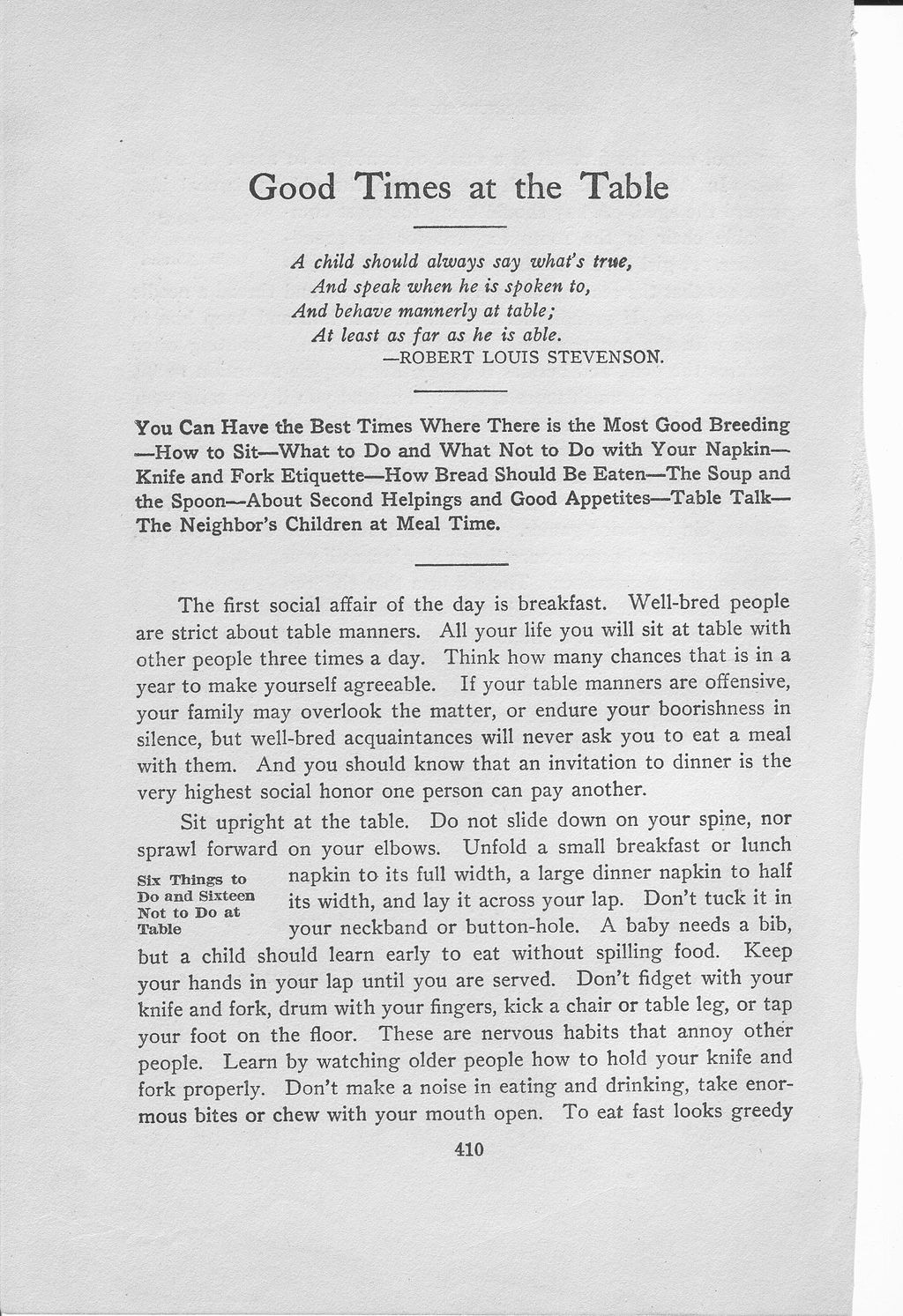Good Times at the Table
- A child should always say what's true,
- And speak when he is spoken to,
- And behave mannerly at table;
- At least as far as he is able.
- —ROBERT LOUIS STEVENSON
- At least as far as he is able.
- A child should always say what's true,
You Can Have the Best Times Where There is the Most Good Breeding—How to Sit—What to Do and What Not to Do with Your Napkin—Knife and Fork Etiquette—How Bread Should Be Eaten—The Soup and the Spoon—About Second Helpings and Good Appetites—Table Talk—The Neighbor's Children at Meal Time.
The first social affair of the day is breakfast. Well-bred people are strict about table manners. All your life you will sit at the table with other people three times a day. Think how many chances that is in a year to make yourself agreeable. If your table manners are offensive, your family may overlook the matter, or endure your boorishness in silence, but well-bred acquaintances will never ask you to eat a meal with them. And you should know that an invitation to dinner is the very highest social honor one person can pay another.
Sit upright at the table. Do not slide down on your spine, nor sprawl forward on your elbows. Unfold a small breakfast or lunch Six Things to Do and Sixteen Not to Do at Tablenapkins to its full width, a large dinner napkin to half its width, and lay it across your lap. Don't tuck it in your neckband or button-hole. A baby needs a bib, but a child should learn early to eat without spilling food. Keep your hands in your lap until you are served. Don't fidget with your knife and fork, drum with your fingers, kick a chair or table leg, or tap your foot on the floor. These are nervous habits that annoy other people. Learn by watching older people how to hold your knife and forks properly. Don't make a noise in eating and drinking, take enormous bites or chew with your mouth open. To eat fast looks greedy
410
